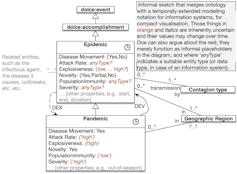A thesis I cannot prove but I believe: We are witnessing the world’s first war where open source intelligence is providing more actionable insights than classified sources.
In this war:
- Tiktok provided direct evidence of the nature of troop and equipment movements.
- Commercial imagery showed field deployment locations, field hospitals, then proof of movement to invade.
- Dating apps provided indications of which military units are being deployed.
- Twitter gave a platform for highly skilled deeply experienced open source analysts to provide insights.
- Cloud connected smartphones with a wide range of capabilities throughout Ukraine gave direct tactical insights into how the war was and is being prosecuted.
- Open source analysts are listening into and translating military communications.
- Cybersecurity analysts and cyber threat intelligence companies are sharing indicators of incidents faster than ever and before any tipping and queuing by government sources.
- Historians with great context on culture and history are more rapidly collaborating and sharing relevant insights.
Much of the above is supported by new tools and applications and collaborative environments for individuals and non government groups.
All of this means, I believe, that this is the world’s first war where open source intelligence is the dominate source.
Background:
Open Source Intelligence is a phrase I’ve known since I began a career in the intelligence community in 1982. By that time the intelligence community had already spent decades developing processes to leverage information produced by adversaries (even though what they say would have a propaganda slant it provided useful insights). For example, one of the most widely known feeds of open source intelligence at the time was the reporting of FBIS, the Foreign Broadcast Information Service, which monitored and translated Soviet media sources. Other open source intelligence also included great work by researchers and academics who studied everything they could on adversaries. An outstanding example from the Cold War was the body of knowledge produced by Harriet Fast Scott and William F. Scott, who were able to provide extensive insights into the internal power structure and military capabilities and intentions of the Soviet Union, all from reading open source intelligence.
Since then the world has changed dramatically. The Berlin Wall fell, the Soviet Union crumbled, and a technological revolution swept over the globe. Old media companies lost their monopoly on delivery of information. Individuals are now empowered by incredible compute power fed by an incredible array of sensors.
Who Uses Open Source Intelligence:
Nations build intelligence capabilities to steal enemy secrets and provide context that can help prepare for uncertainty in order to serve government decision-makers first, and provide some open insights to citizens secondarily.
Open Source Intelligence as a concept and profession came out of the intelligence community and in that context was always thought of as a way to inform the work of the intelligence community. Meaning from a government standpoint the concept is usually referring to information brought into classified assessments. This is still a very valid use case.
But open source intelligence also has non government consumers, including businesses, non-profit organizations and individuals. And by size this is a much bigger segment of users. The use of open source intelligence by this large segment allows for optimal decisions, better informed strategies, reduced risk, and enables citizens to make more informed decisions when it comes to telling governments what they expect from them.
What Does This Mean For Governments?
Governments should evaluate their focus and spend on intelligence. The rise of open sources of information and analysis means the government should be able to focus more on the much harder problems of penetrating adversaries to steal their deepest secrets. Doing this needs smarter ways of leveraging open source intelligence than are currently in place.
What Does This Mean for Businesses?
Businesses should consider, continuously, how to improve their ability to fuel decisions with open source intelligence, including processes to acquire, assess and correlate intelligence as well as the technology to support decision making (for tips on doing this see Decision Intelligence). Businesses who provide intelligence as a service should also take note of this huge shift and double efforts to continue to improve offerings. The innovation in this space will absolutely heat up.
What Does This Mean for Citizens?
As individuals we should all seek to continually develop our own ability to leverage the powerful sources of information at our disposal. This includes understanding what those sources are, what their strengths and weaknesses are, and how to spot misinformation and disinformation. We should all work to mitigate cognitive bias errors.
What Should You Do Next?
We recommend all treat the use of open source intelligence with great respect. Be sure to hone your own skills at analysis and also manage your information diet. Be sure to add the OODA Daily Pulse product to your daily read, this is like getting the open source intelligence version of the President’s Daily Brief delivered each morning.
We also recommend networking with others to share your own best practices and lessons learned in the use of open source intelligence. Improve your direct networking with other professionals by visiting the OODA Forum.

:quality(70)/cloudfront-eu-central-1.images.arcpublishing.com/thenational/XOYL4AFCQROF37747H432DRTEE.jpg)
:quality(70)/s3.amazonaws.com/arc-authors/thenational/9e2159fa-e4db-4215-b498-6b3607b75bee.png)
:quality(70)/cloudfront-eu-central-1.images.arcpublishing.com/thenational/6NCJ4QRWWY3PMQYQT45Z72L3U4.jpg)


 Location-specific details on survey findings can be found at https://bit.ly/3iokodu
Location-specific details on survey findings can be found at https://bit.ly/3iokodu
















